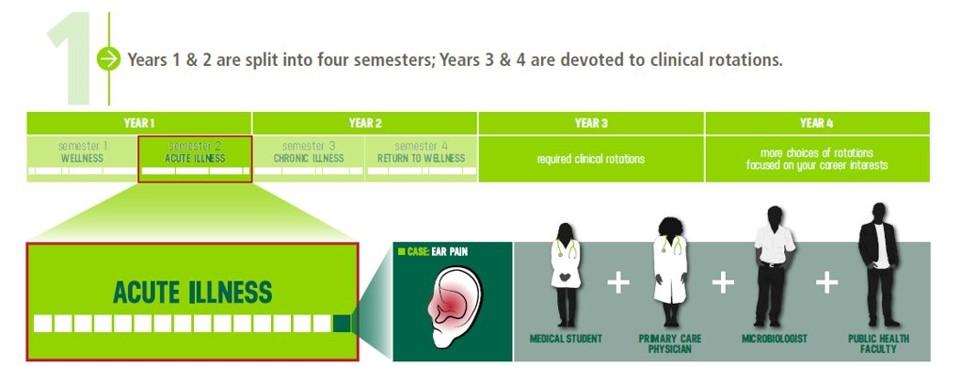
Curriculum Overview

Established by act of the Ohio General Assembly in 1975, the Heritage College of Osteopathic Medicine was created to help alleviate the state’s growing shortage of family physicians and to train doctors for chronically underserved areas. The college remains true to this mission today.
Education in years 1 and 2 typically occurs at one of our three academic campuses. In years 3 and 4, students relocate to our clinical campus sites. Classroom learning experiences emphasize active, authentic learning in which students apply concepts learned through self-directed study and laboratory-based experiences designed to complement and reinforce clinical patient presentations. Clinical experiences, patient case studies and an emphasis on health systems sciences and interprofessional experiences are highlighted and closely align with the single-accreditation system for graduate medical education.
Students are enrolled in the Pathways to Health and Wellness Curriculum, a four-year osteopathic curriculum that fosters horizontal and vertical integration of foundational content; opportunities for elective and/or selective pathways at all campuses; longitudinal themes throughout the curricular design; formative assessments that drive learning; interprofessional approaches to curriculum delivery; and protected time for student and faculty development, wellness and creativity. Foundational sciences and clinical skills are integrated throughout all years of medical education, in which disciplinary divisions are blurred and woven together with elements of wellness, reflective practice and generalism to shape an osteopathic approach to patient care.
